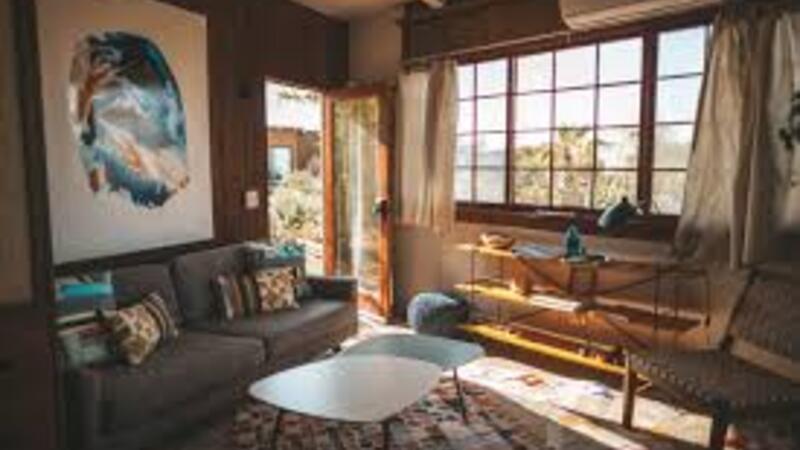Embracing natural light is integral to home design, fostering a harmonious balance between form, function, and the natural environment. An intelligently lit space can profoundly affect our quality of life, bearing significance that transcends aesthetic appreciation. It shapes our daily experiences, influences our moods, and intertwines with our circadian rhythm.
The Importance of Natural Light
Light is the medium through which we experience much of the world, with natural light holding a special place in our homes. It transforms spaces into expansive and vibrant environments where life can flourish. Beyond aesthetics, natural light fulfills a basic human need to connect with the outdoors and is pivotal in our health and happiness. Properly harnessed, it brings out the beauty of home details, colors, and textures, creating lively and dynamic spaces that artificial lighting cannot replicate. As we explore the advantages of natural illumination, remember that managing this resource with finesse is just as crucial. Whether for ambiance, privacy, or UV protection, one can shop our wide range of blinds for every window, finding a harmonious blend of design and practicality.
Health Benefits of Daylight Exposure
Several studies underscore the health benefits of regular exposure to natural sunlight. It’s a vital, life-sustaining force that affects our physical and mental well-being. Natural light exposure during the day has been shown to help regulate our sleep patterns, making us more alert and helping us wind down as dusk falls. It is essential for producing Vitamin D and maintaining bone health and is linked to an improved immune system. Moreover, natural light is a known mood booster, combating the blues and keeping spirits high.
Design Strategies for Maximizing Natural Light
Architects and interior designers employ various strategies to maximize the infusion of natural light. These may include using large, south-facing windows to capture optimal daylight and the installation of skylights for top-down lighting. Materials and surfaces also play a role; glossy finishes and mirrors can be implemented strategically to reflect and amplify natural light, giving life to otherwise dark corners of a space. Additionally, the careful choice of window dressings is essential to enhance natural light penetration while offering the flexibility to adjust the mood and privacy of a room as needed.
Energy Savings and Sustainability
Natural light is not only indispensable for our well-being; it also represents an eco-conscious choice. Maximizing daylight can significantly reduce the need for electric lighting, which is both cost-effective and environmentally friendly. Applying daylighting strategies in home design can lower energy bills, reduce greenhouse gas emissions, and contribute to a sustainable future. Thoughtfully designed, a home with abundant natural light not only saves on energy costs but also harnesses the timeless allure of the ever-changing quality of daylight.
Choosing the Right Window Treatments
While basking in the glow of natural light is desirable, it’s equally important to manage and control it effectively. Window treatments serve this role, allowing the user to adjust the influx of light to suit different purposes and times of the day. The choices are endless, from sheer fabrics that softly filter light to blackout blinds that ensure privacy and darkness. When selecting the ideal window dressing, consider factors such as the direction your windows face, the climate you live in, and the functionality you require. Through this synergy of design and utility, one can truly harness the full potential of natural light in a home environment.
Technological Advances in Window Design
The intersection of innovation and natural light brings exciting developments in window design, particularly with the advent of ‘smart’ technologies. Windows now has photochromic, thermochromic, and electrochromic properties, allowing for electrically controlled tinting. This evolving landscape of options opens doors to greater energy efficiency and customizable environmental control. Innovations like intelligent windows found in Scientific American showcase how technology can re-envision the utilization of solar power, turning a humble window into a source of energy and an instrument of interior comfort.
Common Mistakes to Avoid
Integrating natural light into a home requires consideration beyond placing a few extra windows. One of the most common mistakes is not accounting for the sun’s path and the house’s orientation, resulting in unwanted heat gain or lacking light when needed most. Moreover, attention to window treatments can lead to glare or faded furnishings. A thoughtful approach considers all these factors, ensuring that natural light enhances rather than detracts from the livability of a space.
Final Thoughts on Natural Illumination
The journey through the world of natural illumination in home design is one of discovery and delight. It is an affirmation of the vital role that sunlight plays in shaping our habitats and our lives. With careful planning and creativity, we can curate spaces that reduce our environmental footprint and provide a sense of well-being and continuity with the world outside our windows. As we layer our spaces with appropriate window treatments, we afford ourselves the luxury of lighting that illuminates and inspires.
